The suburban growth occurred in the post- World War II was a consequence of the American "Baby Boom." As American prosperity increased so did the desire to achieve the "America Dream." More and more American families longed for the house in the suburbs away from the noise and congestion of the cities. However, all progress comes with a price. In order to address America's desire for affordable housing, the landscape of rural America would have to change drastically. Examine the following documents, graphs, and photos to discover the consequences of suburban growth on the environment.
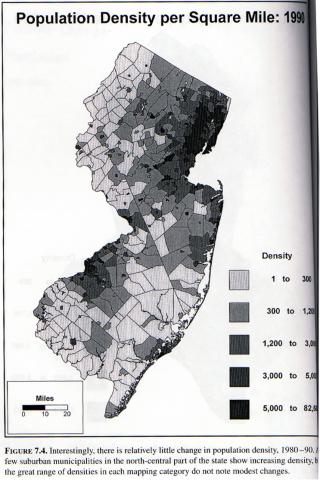
(Charles A. Stansfield. A Geography of NJ. Rutgers Univ. Press. New Brunswick, NJ. 1998.)
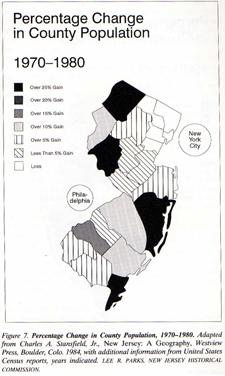
(Charles A. Stansfield. A Geography of NJ. Rutgers Univ. Press. New Brunswick, NJ. 1998.)
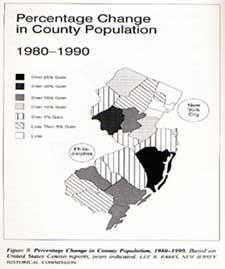
Directions
Examine the graphs above from left to right and answer the following questions. Note: The darker the shaded area the greater the population is in that location. Refer to your map of highways and towns in New Jersey to help you understand the shifts in population.
- In general terms, where do most of the people in New Jersey live? Why do you think they live in those locations?
- How has the population of New Jersey changed in the last thirty years? Why is it changing? How will this effect environment?
Suburban Images

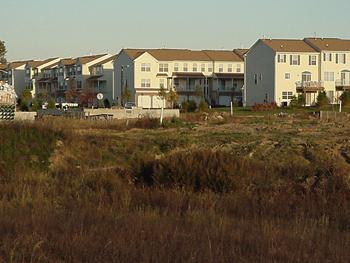
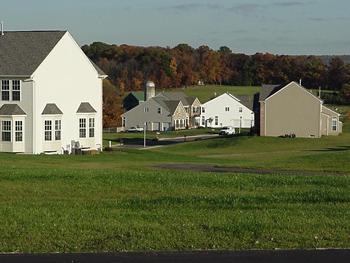
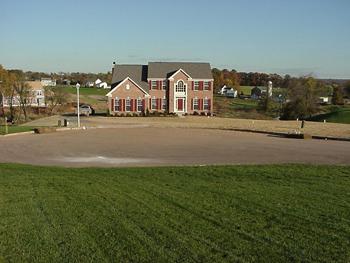
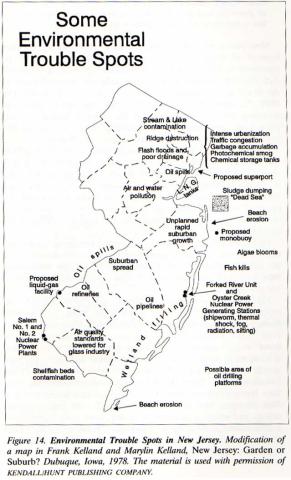
Questions
- What do you notice about the styles of the houses? What objects can you identify in the pictures? What are some of the positive and negative inferences that you can make from the pictures?
- After examining the images above, what conclusions can you make about the environmental impact? What is being sacrificed in the name of growth?